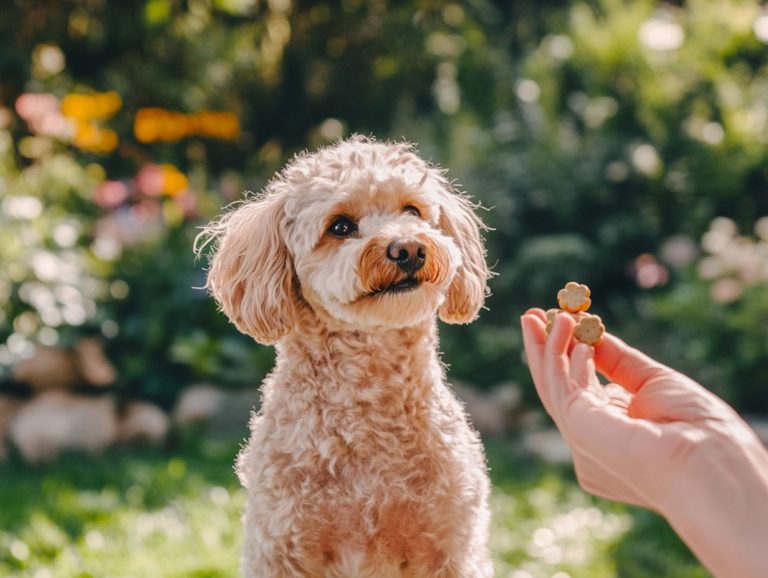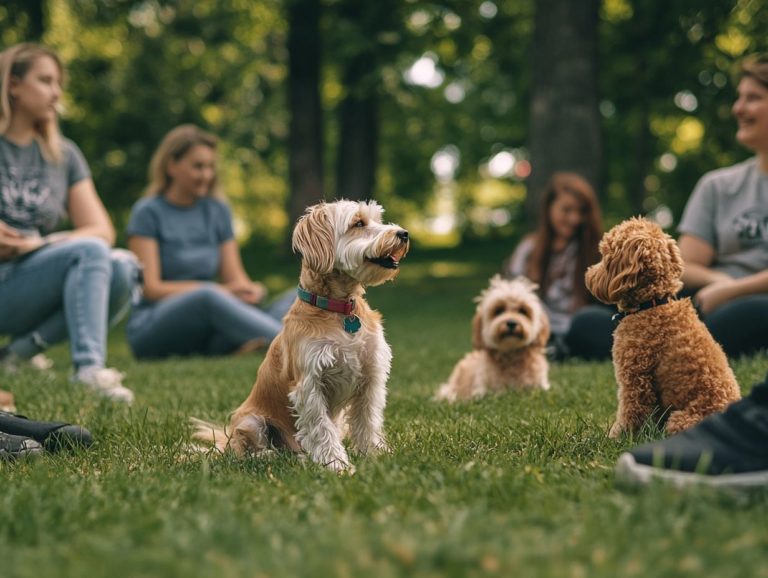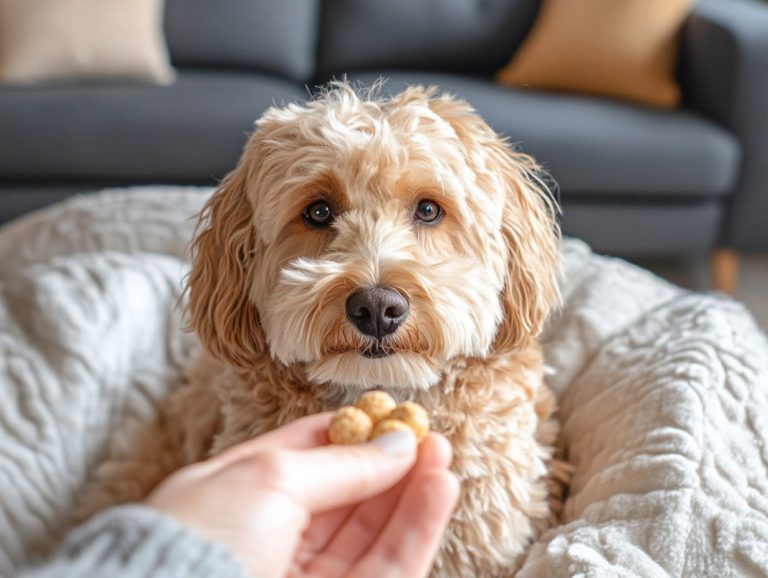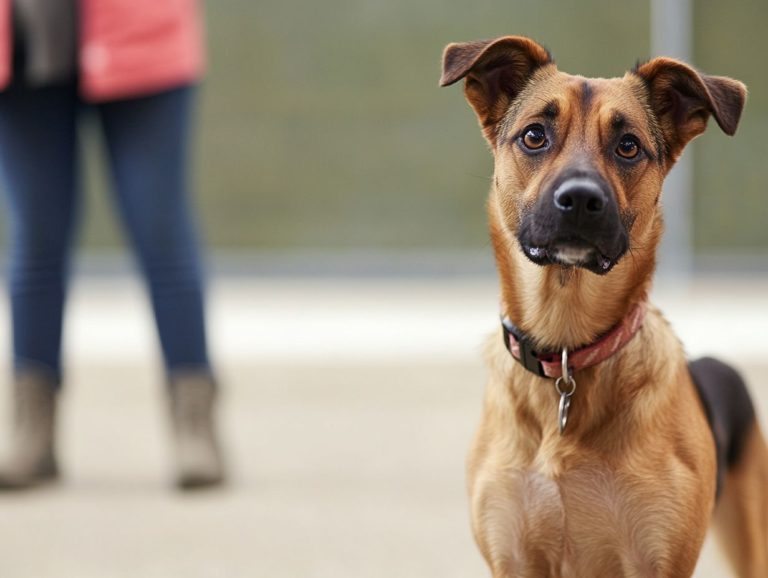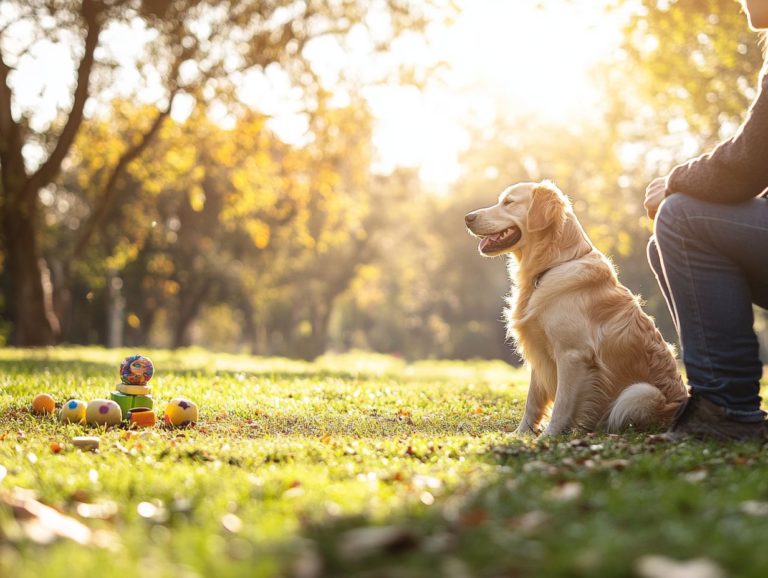Desensitization Techniques for Anxious Pets
Pet anxiety is a common concern for many pet owners. It often reveals itself through behaviors like excessive barking, hiding, or destructive habits.
Recognizing the triggers and symptoms of anxiety in your pet is the crucial first step toward fostering a sense of security for them.
This article explores effective techniques that can greatly reduce anxiety in pets. These include gradual exposure and positive reinforcement strategies.
With practical advice and a clear step-by-step guide, you can learn how to implement these strategies successfully. You’ll also know when it’s time to seek professional help for your beloved companion.
Contents
- Key Takeaways:
- Understanding Pet Anxiety
- Benefits of Desensitization Techniques
- Types of Desensitization Techniques
- Implementing Desensitization Techniques
- Tips for Success
- When to Seek Professional Help
- Frequently Asked Questions
- Worried about your pet’s anxiety? What are desensitization techniques and counterconditioning for anxious pets?
- Why are desensitization techniques important for anxious pets?
- How do I know if my pet needs desensitization techniques?
- What steps are involved in desensitization training for anxious pets?
- Can desensitization techniques be used for any type of anxiety in pets?
- How long does it take for desensitization techniques to work for anxious pets?
Key Takeaways:
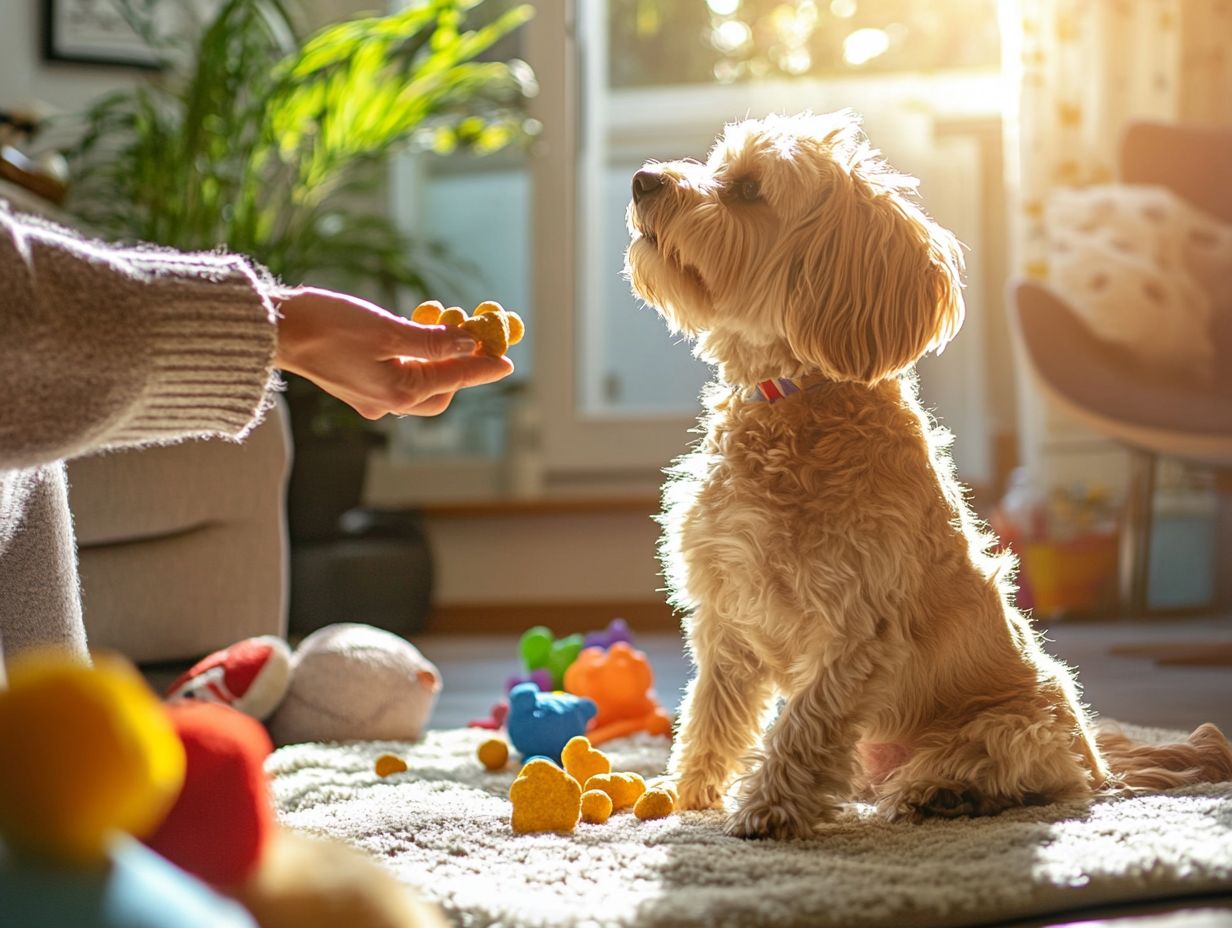
- Desensitization techniques can help reduce anxiety in dogs by gradually exposing them to their triggers and using supportive tools.
- Consistency and managing expectations are crucial for success in using desensitization techniques for anxious pets.
- If your pet shows signs of severe anxiety, it may be time to seek professional help for additional support and treatment options.
Understanding Pet Anxiety
Pet anxiety, particularly in dogs, is a complex issue. It can arise from various negative experiences, emotions, and behaviors.
You may notice it as fearful reactions to triggers like nail trims or meeting new people. These situations can significantly elevate anxiety levels for your beloved pets.
Understanding the underlying causes of this anxiety is essential. This knowledge can help you create effective training programs that focus on improving your pet’s behavior and overall well-being.
Common Triggers and Symptoms
Common triggers of anxiety in dogs include loud noises, unfamiliar environments, and experiences that can lead to fearful reactions.
Activities like grooming with clippers and hair dryers can be distressing, as the sounds and sensations might overwhelm your dog. Sudden encounters with unfamiliar people can also spark anxiety, especially if your dog lacks adequate positive socialization.
Symptoms of anxiety can show in various ways. You might observe excessive barking, pacing, reluctance to eat, or destructive behaviors.
Being able to recognize these signs is crucial for dog owners. Early intervention can greatly enhance your dog’s emotional well-being and lay a strong foundation for effective behavior modification strategies.
Benefits of Desensitization Techniques
Desensitization techniques can dramatically change your pet’s life for the better. By gradually introducing them to stimuli that provoke negative reactions in a controlled environment, you can build their confidence and improve their behavior using training techniques to manage aggression in anxious pets.
This thoughtful approach transforms their experiences, leading to lasting improvements in their emotional well-being.
How It Can Help Anxious Pets
Desensitization techniques can be a game-changer for anxious pets, as they help transform fearful stimuli into positive experiences through careful exposure and consistent support. For more insights, explore the benefits of desensitization training for anxious pets.
By gradually introducing your pet to triggers in a controlled setting, you guide them toward adjusting to situations that once caused distress.
It’s vital to create safe spaces for them. These environments allow your pet to explore stimuli at their own pace, significantly reducing anxiety.
Incorporating tools like delicious treats or engaging in structured therapy sessions can enhance positive behaviors during these encounters. Over time, the association between those once-frightening triggers and positive reinforcement will evolve.
This paves the way for relaxed and confident pets who can embrace a fuller, happier life.
Types of Desensitization Techniques
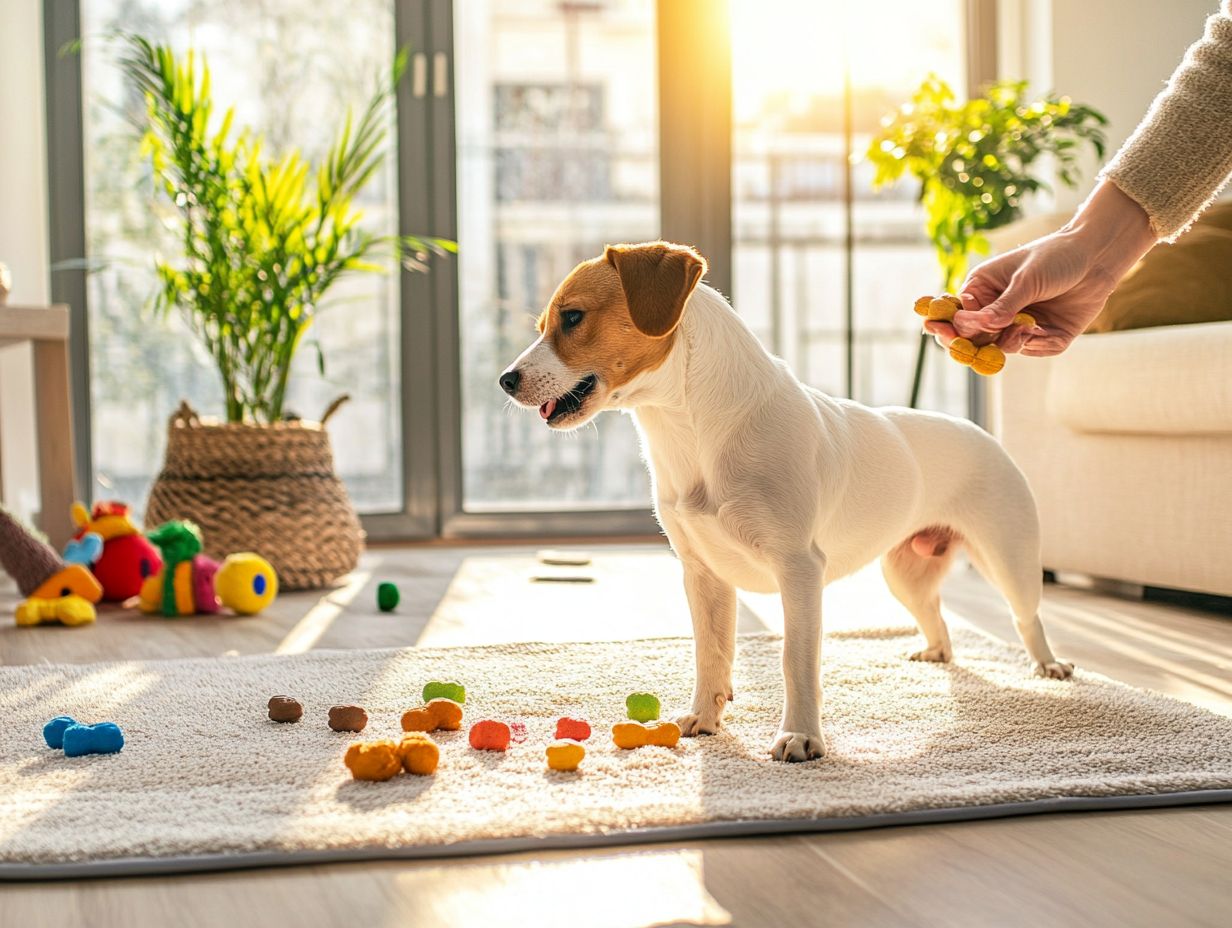
You have a variety of effective desensitization techniques in dog training at your disposal to help your dog overcome anxiety.
Gradual exposure and positive reinforcement strategies are among the most beneficial methods you can employ.
Start implementing these techniques today, and watch your pet thrive!
Gradual Exposure and Counterconditioning
Gradual exposure and counterconditioning are two powerful techniques that can transform your dog’s fearful responses by gently introducing them to their triggers in a safe and controlled environment.
With gradual exposure, you start by assessing your dog’s comfort levels and pinpointing specific things that make your dog anxious. You can then create a gradual hierarchy of these triggers, beginning with the least intimidating ones. This strategy allows your dog to interact with the stimuli at their own pace while you closely observe their reactions and decide when to introduce more challenging situations.
Counterconditioning is also essential, as it helps associate these anxiety triggers with positive experiences. For example, offering treats or engaging in playtime while your dog faces a mildly stressful situation can significantly shift their emotional response. This method fosters a sense of security in scenarios that were once daunting, paving the way for a more confident companion.
Therapeutic Tools and Techniques
Using therapeutic tools and techniques, such as anxiety medication, working with an animal behaviorist, and engaging in positive reinforcement, can significantly enhance your desensitization efforts. For more guidance, check out how to handle anxious pets during training sessions to ensure a smoother experience.
These methods provide a balanced approach to addressing anxiety issues in dogs, ensuring they receive the support necessary for them to thrive.
When incorporating medication, consult with a veterinarian to determine the right dosage and identify any potential side effects. This will help facilitate a smooth transition into this new routine. Collaborating with professionals can also yield personalized strategies tailored to your dog s unique triggers.
By combining these approaches with consistent training, you can cultivate a calm and reassuring environment that reinforces your dog s confidence while gradually alleviating anxiety over time.
Implementing Desensitization Techniques
Implementing desensitization techniques requires a structured training plan that ensures your dog feels safe and comfortable throughout the entire process.
Step-by-Step Guide
Begin with a thoughtful, step-by-step approach, starting with a training plan that emphasizes gradual exposure to anxiety-inducing stimuli.
Start with less intense versions of the triggers, creating a comfortable environment for your dog. Pay close attention to your canine’s body language; signs of stress like a tucked tail or vocalizations may signal it s time to ease off a bit.
As training progresses, gradually increase exposure while rewarding calm behavior to reinforce those positive associations. Keeping a training log can be incredibly helpful, allowing you to track your dog’s responses and fine-tune the plan as needed.
This careful monitoring ensures your journey to help your dog feel better can be both effective and kind!
Tips for Success

To achieve success in your desensitization efforts, it’s essential to manage your expectations. Consistency in your training routines is key, and utilizing positive reinforcement will effectively encourage desired behaviors in your dog.
By adopting these strategies, you create an environment conducive to growth and progress! Start your desensitization journey today for a happier, calmer pet!
Managing Expectations and Staying Consistent
Managing expectations and maintaining consistency are crucial elements in successfully implementing desensitization techniques for your dog. Progress can significantly differ from one pet to another.
Recognizing that every dog responds uniquely and at their own pace is essential to prevent frustration. Sometimes, the timeline may stretch longer than you anticipated due to unexpected setbacks, like shifts in their environment or stressors that disrupt training.
Practice patience to create a more supportive environment for your dog. A consistent training routine reinforces learning and builds trust. Positive reinforcement, which means rewarding your pet for good behavior, acts as a motivational boost to encourage further progress.
Celebrate those small victories along the way; it helps foster a positive mindset for both you and your furry friend.
When to Seek Professional Help
Knowing when to get professional help for your dog can change everything. Certain signs may indicate that your furry friend could benefit from the expertise of an animal behaviorist or specialized therapy.
Paying attention to these cues can make all the difference in ensuring your dog’s well-being.
Signs that Your Pet May Need Additional Support
Common signs that your pet may require additional support include constant worry, extreme fearful reactions, and a noticeable lack of progress despite your consistent training efforts.
You might also observe excessive barking, destructive behavior, or avoidance of certain situations. These behaviors can lower your pet’s quality of life and introduce stress within your household.
Timely intervention is essential. By addressing these issues early, you can prevent the escalation of anxiety and related problems. Collaborating with an animal behaviorist can lead to customized strategies that create a more harmonious environment, enhancing both your pet s well-being and the bond you share.
Frequently Asked Questions
Worried about your pet’s anxiety? What are desensitization techniques and counterconditioning for anxious pets?
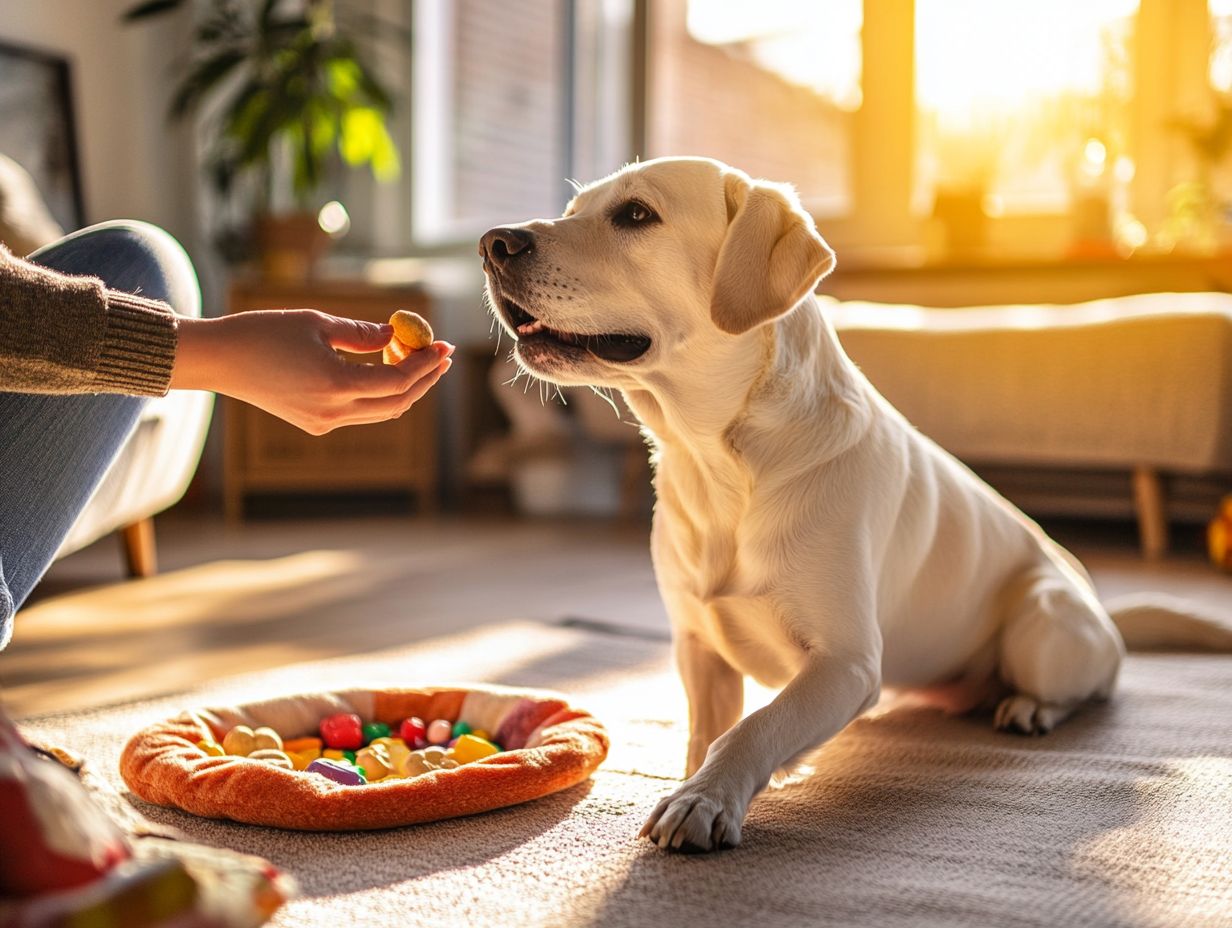
Desensitization techniques and counterconditioning for anxious pets are behavioral training methods. They involve gradually exposing your anxious pet to a feared stimulus in a controlled and positive manner, which can be enhanced by using techniques to calm anxious pets before training to reduce their fear and anxiety.
Why are desensitization techniques important for anxious pets?
Desensitization techniques are important because they help pets overcome fears and anxieties, leading to improved behaviors and overall well-being. Implementing socialization techniques for anxious pets through positive reinforcement and training can make a significant difference.
How do I know if my pet needs desensitization techniques?
If your pet shows signs of fear, anxiety, or stress in certain situations or around certain stimuli, it may benefit from desensitization techniques. Signs include trembling, hiding, excessive barking or meowing, pacing, and destructive behavior.
What steps are involved in desensitization training for anxious pets?
The steps in desensitization training for anxious pets include identifying the feared stimuli, creating a gradual exposure plan, using positive reinforcement and rewards, and slowly increasing the intensity or duration of exposure. For more specific strategies, check out these techniques for training anxious senior pets.
Can desensitization techniques be used for any type of anxiety in pets?
Desensitization techniques can be used for various anxieties in pets, including separation anxiety, noise phobias, and fear of new environments or people. Implementing noise reduction techniques for anxious pets may also help. However, consult a professional trainer or behaviorist for a customized plan for your pet’s specific needs.
How long does it take for desensitization techniques to work for anxious pets?
The time it takes for desensitization techniques to work can vary depending on your pet and their specific anxiety. It’s important to be patient and consistent with training, as it may take several weeks or even months to see significant improvements in your pet’s behavior. Utilizing techniques for building a bond with anxious pets can also enhance the effectiveness of your efforts.
If you notice these signs in your pet, don’t wait start desensitization training today!

